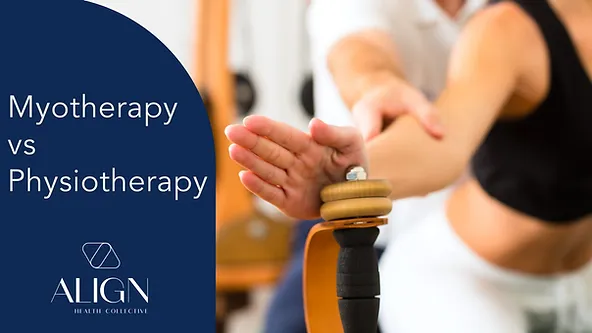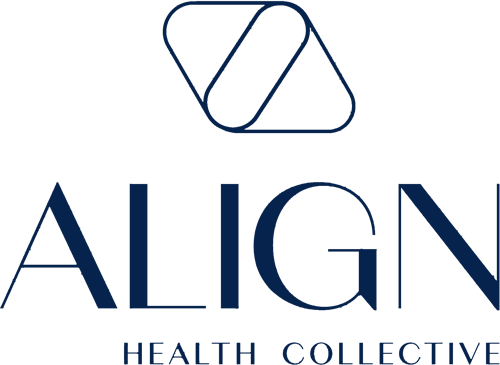Updated: Oct 3
Are you looking for more information on the differences between myotherapy and physiotherapy? Look no further. In recent years, physical ailments have become increasingly common. Whether it’s due to our sedentary lifestyles, sports injuries, or just the natural ageing process, the need for effective treatments is paramount. Both physiotherapy and myotherapy have garnered attention for their effectiveness in treating various physical ailments.
In this guide, we’ll delve deeper into the intricacies of myotherapy in comparison with physiotherapy, offering insights to help you make an informed decision whether you want to avail of myotherapy or physiotherapy in Melbourne or physiotherapy in Indooroopilly.

One of the primary distinctions is that physiotherapists can provide a diagnosis, whereas myotherapists typically cannot. Other key differences include the conditions treated, as well as the treatment methods used by each profession.
We’ve summarised the key differences between myotherapists and physiotherapists in the table below:
| | Physiotherapist | Myotherapist |
| Conditions treated | Wide range, e.g. post-surgery rehab, chronic neck/back pain, injuries, etc. | Soft tissue injuries and joint restriction |
| Treatment methods | Electrotherapy, exercise programs, education, joint manipulation, ultrasound, (TENS), hydrotherapy | Soft tissue massage, dry needling, cupping, trigger point therapy |
| Qualifications | 4-year university degree, often + specialisation | 2-year diploma or certification |
| Can provide a formal diagnosis? | ✅ | ❌ |
What is Physiotherapy?
Physiotherapy, often referred to as physical therapy, is a well-established healthcare profession. Rooted in science and evidence-based practices, it focuses on the body’s ability to move and function. Physiotherapists often treat acute musculoskeletal injuries and chronic pain, or they may be called upon for mobilisation and rehabilitation treatment after an accident. Whether you’ve had surgery, suffered an injury, or are dealing with muscle pain and stiffness, physiotherapy offers a holistic approach to healing.
What is Myotherapy?
Myotherapy, on the other hand, is a specialised form of therapy that zeroes in on soft tissue pain and restricted joint movement. If you’ve been grappling with muscle tightness, strains, or sprains, myotherapy might be the solution you’ve been seeking.
Myofascial Release in Myotherapy
A standout technique in myotherapy is myofascial release. This method focuses on the fascia, a connective tissue that surrounds muscles, bones, and organs. According to Healthline, by stretching and massaging the stiff myofascia and applying sustained pressure to the myofascial connective tissue, the myotherapist can release tension and alleviate pain.
Pressure and stretching are often used repeatedly on the same trigger points (in one session or over several sessions) until the myofascia is released completely. It’s important to note that this treatment may be effective after one or two sessions, but it may also take many sessions before you feel the full effect.
Key Differences Between Physiotherapy and Myotherapy
Conditions Treated
While both physiotherapists and myotherapists are equipped to address pain and injuries, they cater to different conditions. Physiotherapists handle a broad spectrum of issues, from post-operative or post-surgical rehabilitation to chronic conditions. They’re the go-to professionals for conditions like arthritis, neck and back pain, sports injuries, repetitive strain injuries (RSI), and muscular dystrophy. Physiotherapists can also specialise in neurophysiotherapy, which treats the physical effects of neurological conditions, such as stroke, spinal injuries, multiple sclerosis (MS), and Parkinson’s disease.
Myotherapists, however, shine in treating soft tissue injuries and joint restrictions. They’re the experts when it comes to conditions like muscle sprains, tension headaches, and even carpal tunnel syndrome. Myotherapists have the tools and techniques to address a range of conditions, and they’re trained to understand the intricacies of muscles and how they function, ensuring that every treatment is tailored to the individual’s needs.

Myotherapy vs PhysiotherapyTreatment Methods – Align Health Collective
Treatment Methods
Rooted in hands-on techniques, myotherapists’ treatment techniques include muscle stretching, trigger point therapy, cupping, and even dry needling, to provide relief. It’s a therapy that’s gaining traction, especially among those who’ve experienced its benefits first-hand. Unlike remedial massage therapists, myotherapists focus on specific areas of pain and discomfort.
Physiotherapy, however, offers a broader range of treatments. From electrotherapy and hydrotherapy to exercises and education, it’s a comprehensive approach to healing. Interestingly, some physiotherapists will employ treatment methods used by myotherapists, but this would be in conjunction with other techniques like exercise programs, joint manipulation, ultrasound, transcutaneous electrical nerve stimulation (TENS), and specialised soft tissue massages. Physiotherapists aim to restore function, alleviate pain, and enhance mobility.
Qualifications and Certifications
Both professions demand rigorous training. Physiotherapists undergo university-level education, often followed by specialised training in areas like sports physiotherapy or paediatric physiotherapy. Myotherapists, while also undergoing extensive training, often have certifications in massage and manual therapies.
Physiotherapists are registered healthcare professionals and will usually attend university for at least four years, whereas myotherapists usually receive two years of education and should be registered with Myotherapy Association Australia (MAA).
Diagnosis
A significant distinction is diagnostic capability. Physiotherapists can provide a diagnosis, setting them apart. They’re trained to assess, diagnose, and treat physical conditions. Myotherapists, while experts in their field, typically focus on treatment without formal diagnosis.
Benefits of Physiotherapy
For the average patient, physiotherapy’s main benefit is pain relief and pain reduction. However, physio offers a range of benefits that include improved range of motion, increased strength, reduced need for medication, overall better quality of life, and may even assist in preventing the need for surgery – the benefits are vast.
Physiotherapy looks at the body as a whole, ensuring every aspect of physical health is addressed. Whether it’s helping an athlete get back on the field, treating chronic back pain caused by a sedentary lifestyle, or assisting an elderly individual in maintaining independence, physiotherapy plays a crucial role in enhancing quality of life.
Benefits of Myotherapy
Myotherapy, with its targeted approach, offers quick and effective relief for soft tissue and muscle-related issues. For those grappling with muscle tightness, strains, or sprains, myotherapy offers targeted relief. Myotherapy’s specialised techniques address soft tissue concerns, ensuring pain relief and tension release.
Possible Side Effects and Risks of Myotherapy
Like all treatments, myotherapy has potential side effects. While rare, it’s possible to experience temporary soreness, minor bruising, or even a post-treatment headache. However, with trained professionals at the helm, risks are minimal. It’s always advised to consult with a myotherapist and understand the potential risks before undergoing treatment.
Open communication with your myotherapist is also paramount; during your sessions, alert your myotherapist as soon as the treatment causes any excessive pain or discomfort.
At Align Health Collective, we provide a wide variety of physiotherapy and non-surgical treatment options for assorted conditions. We also pride ourselves on our ability to achieve treatment goals through personalised treatment plans aligned with each patient’s specific requirements.
Remember, it’s always best to consult with a professional, understand your needs, and then make an informed decision. We have offices in Melbourne, VIC and Brisbane, QLD, so contact us today to schedule a consultation and take your first step towards healing.
